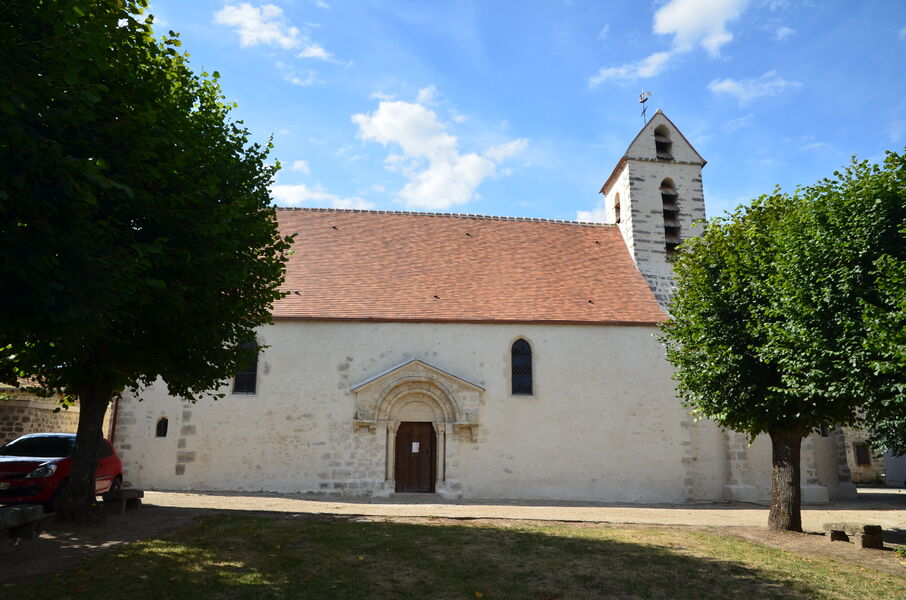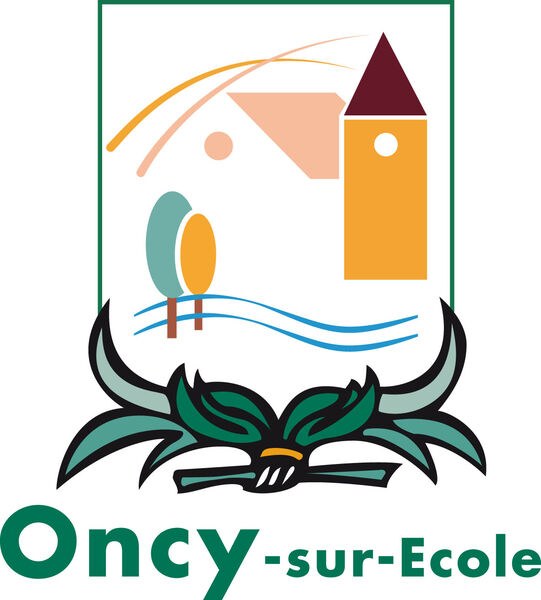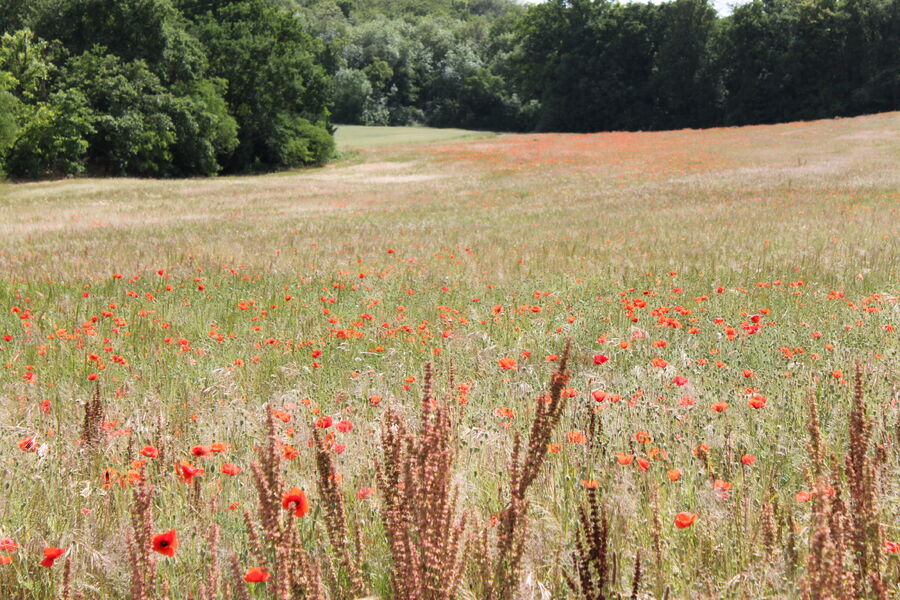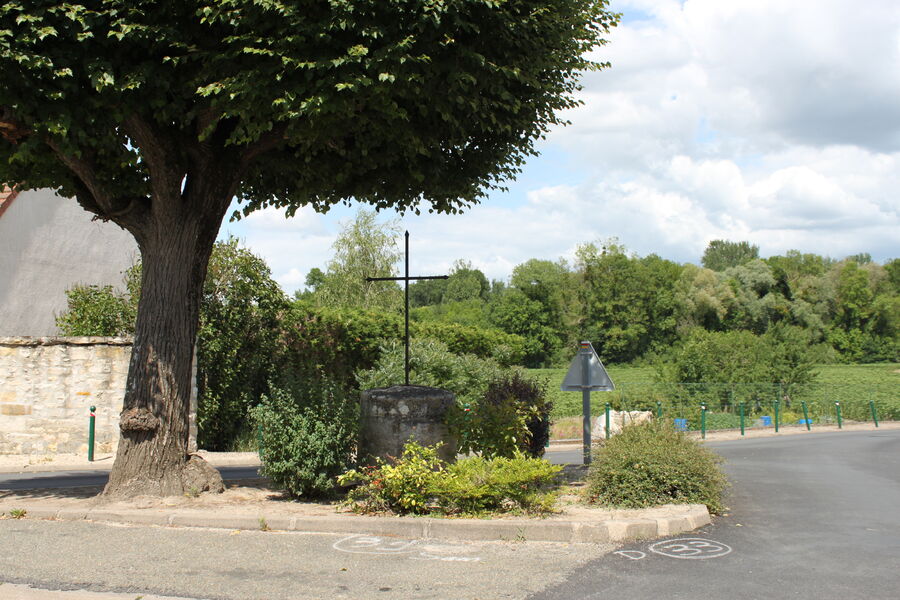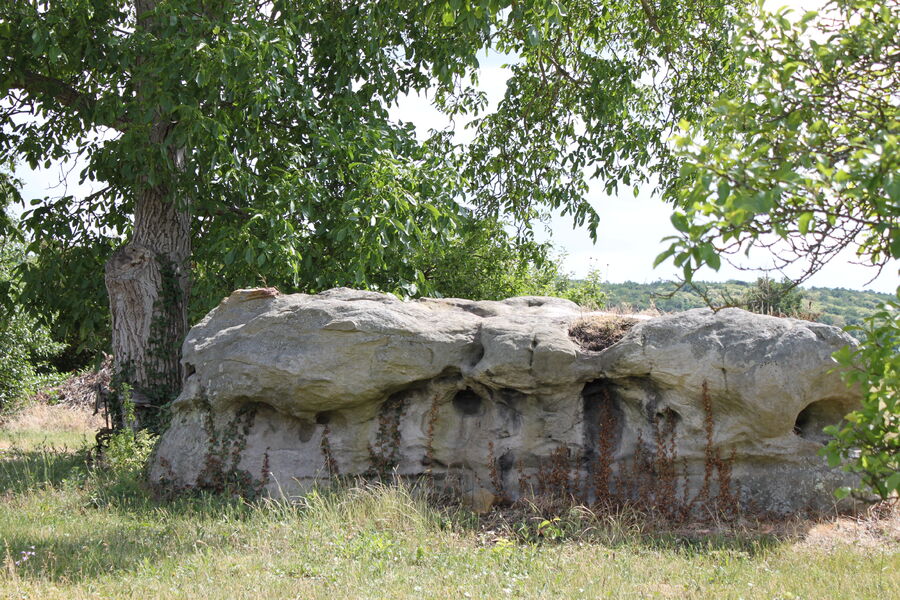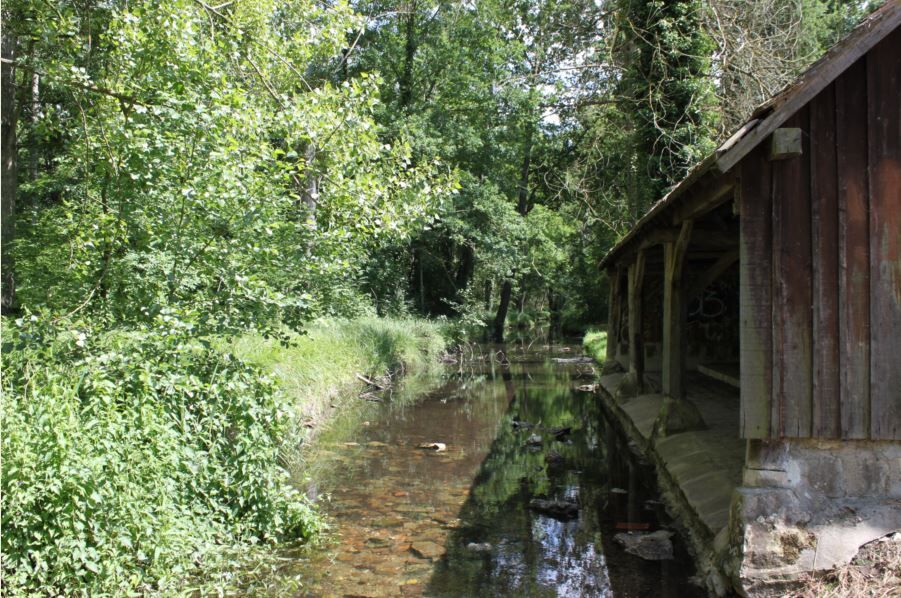Oncy sur Ecole
Oncy-sur-École
Patrimoine culturel
Oncy-sur-École is a small village located in the South of Essonne. It is crossed by the École River and most of the village is occupied by Mount Grippon.
-------------
HISTORY
Mount Grippon’s slopes have always been occupied by humans as some traces of life dating back from the Prehistoric era were found. Indeed, numerous engraving and painting from the Mesolithic are found from time to time, especially some tools and objects found by local farmers. So, thanks to those discoveries, we can confirm that the inhabitants of Oncy during the Neolithic era were mostly sedentary and practiced agriculture.
The name of Oncy is supposed to come from the Latin “Onchiæ” or from the derived Celtic word “onn” which means ash tree. Some traces of Gallo-Roman houses were found during different archeological digs.
Until the 6th century, the main road linking Paris to Lyon was going through Oncy-sur-École, so, at the time, the village was very busy. The old village used to gather around one noble house called le Clos d’Artois. This house had a farm and a chapel which later became the village’s church. Previously, an oratory was standing there instead of the church. Saint-Martin’s patronage in Oncy was a thing even before 1100.
From the 12th century, Oncy’s territory was given to the abbey of Saint-Victor de Paris and they built a priory. The prior of the village was considered as the lord of the estate until 1661 when the estate was bought by someone close to the French King : Jean Lecomte, Lord de la Renommière. The prior used to be the one keeping registers of the priory and was referred as the lord.
During the Hundred Years War, the village was attacked by Englishmen. The church was burnt and rebuilt only many years later. Still during this war, the village was severely affected by diverse fatal events such as the plague or the famine that devastated the whole of Europe. During the 15th century, as the Hundred Years War was still going, Oncy was impacted by the civil war between the Armagnacs, who were supporting the Dauphin Charles VII, and the Bourguignons, who were supporting England. The local territories, farms and castles were regularly looted.
During the 17th century, the village was once again in the middle of conflicts because of the Fronde (a French civil war). Indeed, a lot of conflicts happened in the territories around the Route d’Orléans which was strategic to go to Paris.
In 1791, the village was not anymore part of the parish of Milly after a few centuries. However, the last prior of Oncy quitted the estate and his position only in 1793.
In 1815, the area was mostly occupied by Englishmen, Prussians and Russians for a time following the defeat of Napoléon in Waterloo. Oncy was thankfully preserved from this occupation, however, it was common to see soldiers and troops passing through the village as several conflicts took place not so far from Oncy-sur-École.
The village earned its reputation during the 20th century thanks to the intensive culture of different medical plants such as peppermint or hemp. Nowadays, the last producer of Milly’s peppermint is located in Oncy-sur-École.
A total of ten persons from Oncy died during the two world wars. During World War II, the village was occupied by Germans. On the 6th of April 1944, a group of twelve resistants was arrested in a café by Germans. This night, numerous houses were burnt by them too. Only half of those resistants survived the concentration camps.
There is a wooden pathway in Oncy that leads to the Château de la Bonde located in Milly-la-Forêt. This green lane is protected by the ZPPAUP (a French measure to ensure the protection of certain architectural, patrimonial, urban and scenic sites).
-------------
HERITAGE
The Church of Saint-Martin
This church was built between the end of the 11th century and the beginning of the 12th century at the same time as the priory. It is mostly of Roman style which is not very common in the Gâtinais. Its bell tower is leaning on a wider span, which is quite rare. Its nave is newer and was built during the 15th century. The beautiful door is made of oak and from the same period. The lock has a Renaissance style in perfect condition and is still used nowadays.
The church was burnt by Englishmen back in the Hundred Years War as they were occupying the region. It was rebuilt many years later.
Some traces of the old door can be seen onto the South side of the church. On the other side of the wall, so, inside the church, we can clearly see some traces of ebrasure of this ancient door that has disappeared.
The church of Oncy also has two litura funeris with coat-of-arms : one is black, the other is red. This is something quite rare that disappeared in churches through time. In the past, mostly during the Middle Age, those coloured strips were used to pay tribute inside of churches to important people such as lords when they were dead.
The majority of the furniture is from the 17th century. Two statues from the 13th century are an eye-catcher : Virgin Mary with baby Jesus and Sainte-Anne. They both are classified as part of the Monuments Historiques such as a painting of Saint-Sebastien and Sainte-Julienne. Two tombstones can be seen in the church, one belongs to the legendary father Soubise who founded the Compagnonnage des Passants du Devoir (an organization for craftsmen and artisans).
++++
The House of Lantara
Oncy-sur-École is the place where the famous painter of landscapes Simon-Mathurin Lantara was born in 1729. His birth house is located at the crossroads of la Grande Rue and la Rue Lantara. This street was named after the painter’s name. The house is recognisable because there is a memorial plaque on the wall. Lantara is regularly considered as the precursor of the Barbizon School.
++++
The Wayside Crosses
The wayside crosses have been existing since the Middle Age. They were placed in order to christianise a place or a village. They also were used to locate themselves, to protect people and for pilgrimages. Obviously, Oncy has several crosses to show :
The Cross of Saint-Augustin
The Cross of Saint-Jean
The Cross du Jubilé
The Cross de Châtillon
++++
The Farm du Clos d’Artois
In the past, the village was gathered all around one noble house named le Clos d’Artois. Nowadays, there is a farm called Ferme du Clos d’Artois. It is where the last producer of peppermint of Milly is.
++++
SOURCE: Mairie d’Oncy-sur-École, Musée des Peintres de Barbizon, Les Amis de Milly-en-Gâtinais et Environs, Corpus Étampois, Parc Naturel Régional du Gâtinais Français
HISTORY
Mount Grippon’s slopes have always been occupied by humans as some traces of life dating back from the Prehistoric era were found. Indeed, numerous engraving and painting from the Mesolithic are found from time to time, especially some tools and objects found by local farmers. So, thanks to those discoveries, we can confirm that the inhabitants of Oncy during the Neolithic era were mostly sedentary and practiced agriculture.
The name of Oncy is supposed to come from the Latin “Onchiæ” or from the derived Celtic word “onn” which means ash tree. Some traces of Gallo-Roman houses were found during different archeological digs.
Until the 6th century, the main road linking Paris to Lyon was going through Oncy-sur-École, so, at the time, the village was very busy. The old village used to gather around one noble house called le Clos d’Artois. This house had a farm and a chapel which later became the village’s church. Previously, an oratory was standing there instead of the church. Saint-Martin’s patronage in Oncy was a thing even before 1100.
From the 12th century, Oncy’s territory was given to the abbey of Saint-Victor de Paris and they built a priory. The prior of the village was considered as the lord of the estate until 1661 when the estate was bought by someone close to the French King : Jean Lecomte, Lord de la Renommière. The prior used to be the one keeping registers of the priory and was referred as the lord.
During the Hundred Years War, the village was attacked by Englishmen. The church was burnt and rebuilt only many years later. Still during this war, the village was severely affected by diverse fatal events such as the plague or the famine that devastated the whole of Europe. During the 15th century, as the Hundred Years War was still going, Oncy was impacted by the civil war between the Armagnacs, who were supporting the Dauphin Charles VII, and the Bourguignons, who were supporting England. The local territories, farms and castles were regularly looted.
During the 17th century, the village was once again in the middle of conflicts because of the Fronde (a French civil war). Indeed, a lot of conflicts happened in the territories around the Route d’Orléans which was strategic to go to Paris.
In 1791, the village was not anymore part of the parish of Milly after a few centuries. However, the last prior of Oncy quitted the estate and his position only in 1793.
In 1815, the area was mostly occupied by Englishmen, Prussians and Russians for a time following the defeat of Napoléon in Waterloo. Oncy was thankfully preserved from this occupation, however, it was common to see soldiers and troops passing through the village as several conflicts took place not so far from Oncy-sur-École.
The village earned its reputation during the 20th century thanks to the intensive culture of different medical plants such as peppermint or hemp. Nowadays, the last producer of Milly’s peppermint is located in Oncy-sur-École.
A total of ten persons from Oncy died during the two world wars. During World War II, the village was occupied by Germans. On the 6th of April 1944, a group of twelve resistants was arrested in a café by Germans. This night, numerous houses were burnt by them too. Only half of those resistants survived the concentration camps.
There is a wooden pathway in Oncy that leads to the Château de la Bonde located in Milly-la-Forêt. This green lane is protected by the ZPPAUP (a French measure to ensure the protection of certain architectural, patrimonial, urban and scenic sites).
-------------
HERITAGE
The Church of Saint-Martin
This church was built between the end of the 11th century and the beginning of the 12th century at the same time as the priory. It is mostly of Roman style which is not very common in the Gâtinais. Its bell tower is leaning on a wider span, which is quite rare. Its nave is newer and was built during the 15th century. The beautiful door is made of oak and from the same period. The lock has a Renaissance style in perfect condition and is still used nowadays.
The church was burnt by Englishmen back in the Hundred Years War as they were occupying the region. It was rebuilt many years later.
Some traces of the old door can be seen onto the South side of the church. On the other side of the wall, so, inside the church, we can clearly see some traces of ebrasure of this ancient door that has disappeared.
The church of Oncy also has two litura funeris with coat-of-arms : one is black, the other is red. This is something quite rare that disappeared in churches through time. In the past, mostly during the Middle Age, those coloured strips were used to pay tribute inside of churches to important people such as lords when they were dead.
The majority of the furniture is from the 17th century. Two statues from the 13th century are an eye-catcher : Virgin Mary with baby Jesus and Sainte-Anne. They both are classified as part of the Monuments Historiques such as a painting of Saint-Sebastien and Sainte-Julienne. Two tombstones can be seen in the church, one belongs to the legendary father Soubise who founded the Compagnonnage des Passants du Devoir (an organization for craftsmen and artisans).
++++
The House of Lantara
Oncy-sur-École is the place where the famous painter of landscapes Simon-Mathurin Lantara was born in 1729. His birth house is located at the crossroads of la Grande Rue and la Rue Lantara. This street was named after the painter’s name. The house is recognisable because there is a memorial plaque on the wall. Lantara is regularly considered as the precursor of the Barbizon School.
++++
The Wayside Crosses
The wayside crosses have been existing since the Middle Age. They were placed in order to christianise a place or a village. They also were used to locate themselves, to protect people and for pilgrimages. Obviously, Oncy has several crosses to show :
The Cross of Saint-Augustin
The Cross of Saint-Jean
The Cross du Jubilé
The Cross de Châtillon
++++
The Farm du Clos d’Artois
In the past, the village was gathered all around one noble house named le Clos d’Artois. Nowadays, there is a farm called Ferme du Clos d’Artois. It is where the last producer of peppermint of Milly is.
++++
SOURCE: Mairie d’Oncy-sur-École, Musée des Peintres de Barbizon, Les Amis de Milly-en-Gâtinais et Environs, Corpus Étampois, Parc Naturel Régional du Gâtinais Français
Prestations, conforts et services
- French


